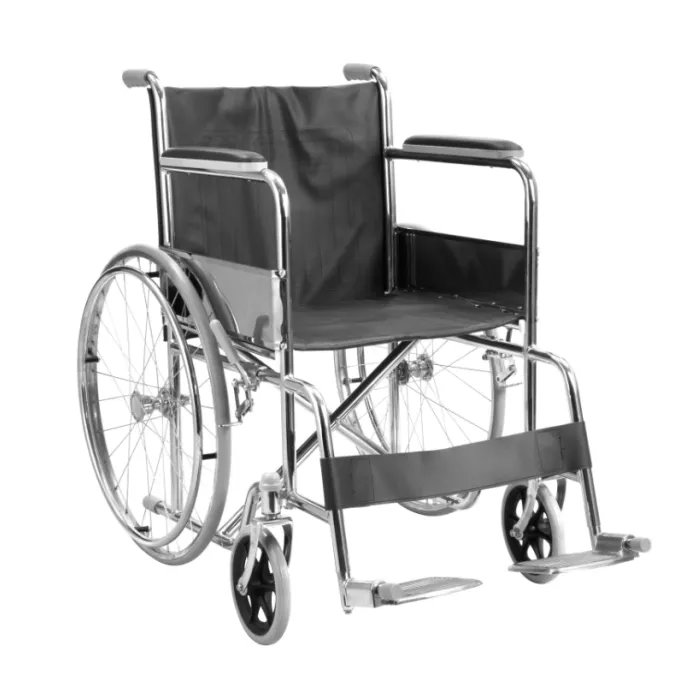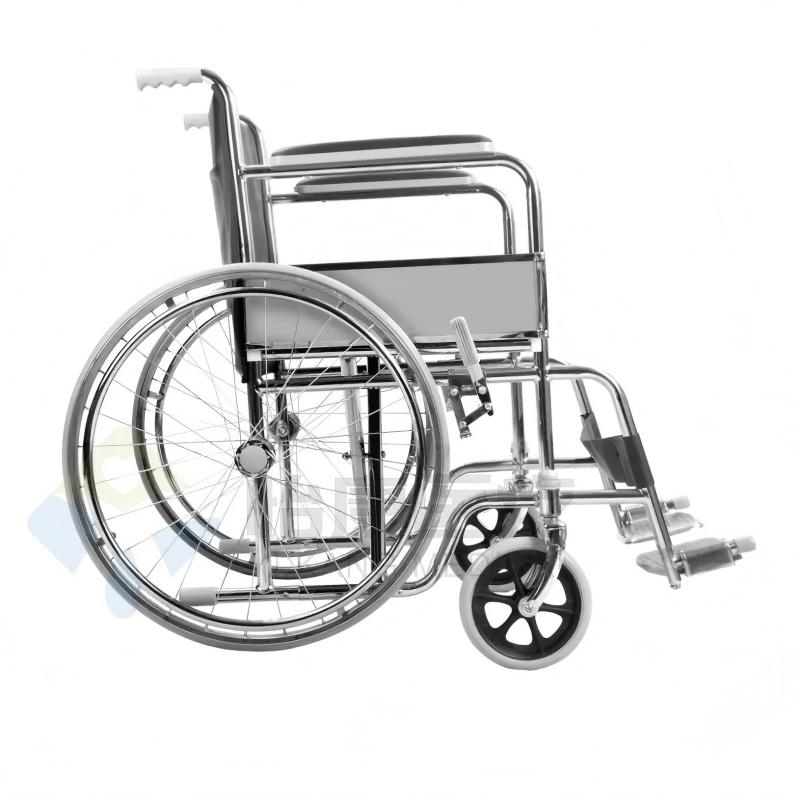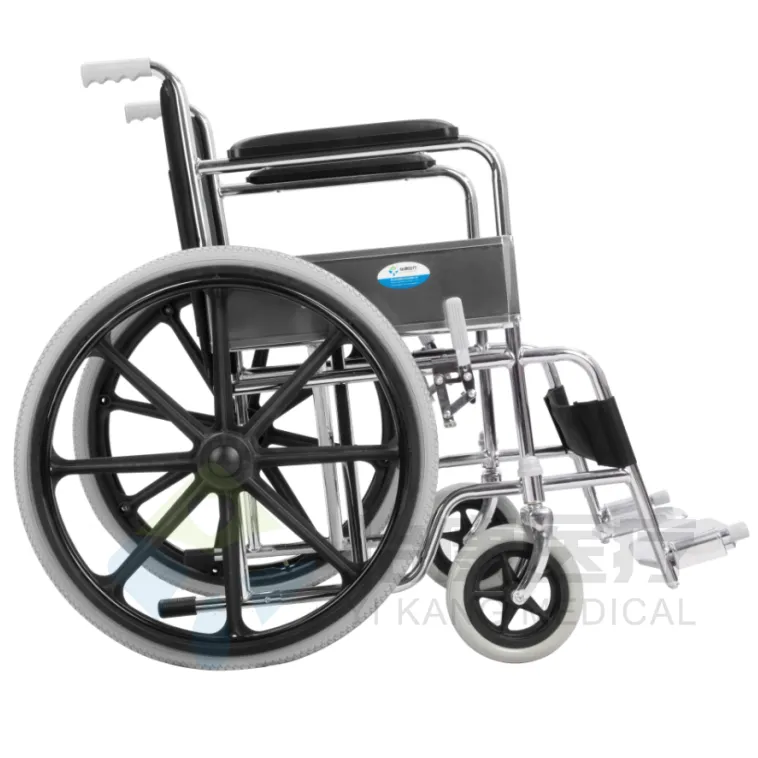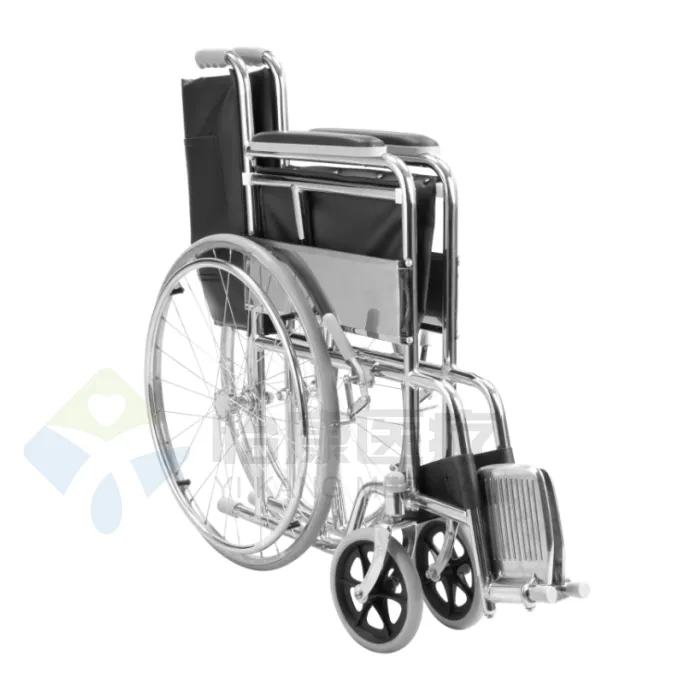As an important part of mobility aids, stainless steel wheelchairs play a key role in the obese population with their excellent load-bearing capacity and structural stability. Compared with ordinary wheelchairs, steel wheelchairs have higher strength, wider seats and more solid frame structures, and are the main equipment to meet the basic mobility needs of heavy users.
This article will focus on the core question of "What is the width of a stainless steel wheelchair for obese people?" and conduct professional analysis from multiple dimensions such as the definition, design features, standard size range, weight range corresponding to different widths, national standards and industry specifications of steel wheelchairs, striving to provide a comprehensive and detailed answer for people with actual needs, caregivers and medical equipment purchasers.

What is a steel wheelchair?
A steel wheelchair refers to a type of wheelchair that uses high-strength steel as the main structural material. Compared with common aluminum alloy wheelchairs or titanium alloy wheelchairs, steel wheelchairs have stronger load-bearing capacity and impact resistance. Since obese people's weight exceeds the design range of conventional wheelchairs, the use of steel wheelchairs with reinforced structures has become the first choice to meet safety and practicality needs.
The basic structure of a steel wheelchair includes:
· Steel main frame: provides overall load-bearing and support;
· Reinforced welded connection points: enhance structural stability;
· Widened seat and backrest: adapt to large users;
· Reinforced wheels and footrests: maintain stability when bearing higher weight;
· High-density foam seat cushion: improve comfort and sitting safety.
Steel wheelchairs are heavier due to their material, usually between 18-25 kg, but the structure is more stable, especially suitable for long-term use by obese people and clinically critical patients.

What are the needs of obese people for steel wheelchairs?
The physiological structure of obese people is significantly different from that of ordinary people, which leads to the need to consider the following key points when choosing a wheelchair:
· Load-bearing capacity: Stainless steel wheelchairs need to be able to support a weight of more than 100 kg or even more than 200 kg.
· Seat width: must be able to accommodate a wider pelvis and thigh circumference to ensure comfortable riding.
· Seat depth and backrest height: match according to body shape, otherwise it is easy to cause health problems such as pressure sores and spinal deformities.
·Frame stability: prevent overturning and wheel frame twisting.
Therefore, the seat width of a stainless steel wheelchair is not only a technical parameter, but also a key indicator to ensure the safety and comfort of obese people.
Seat width standard for steel wheelchairs for obese people
1. General manual wheelchair seat width reference (adult)
Body type | Recommended seat width (cm) |
| Normal body type | 40–45 cm |
| Overweight body type | 46–50 cm |
Obese body type | 51–60 cm |
| Extremely obese body type | 61–75 cm |
In clinical and industrial product classification, steel wheelchairs with a seat width of more than 51 cm (20 inches) are considered to be special models designed for obese people. According to different user weight ranges, the width specifications of stainless steel wheelchairs can be subdivided as follows:
2. Common width specifications of steel wheelchairs for obese people (in centimeters)
Model classification | Applicable weight range | Typical seat width (cm) | Notes |
| Standard wide type | 100–130 kg | 51–55 cm | Most commercial models |
| Reinforced type (moderate obesity) | 130–160 kg | 56–60 cm | Reinforced frame + thickened tires |
| Severe obesity type | 160–200 kg | 61–68 cm | Medical grade steel frame |
| Extremely heavy typ | 200 kg and above | 69–75 cm | Common parameters for custom wheelchairs |
It should be noted that not all models are suitable for all scenarios. The larger the seat width of a steel wheelchair, the larger its turning radius, the heavier its weight, and the lower its mobility. Therefore, the choice of seat width needs to weigh multiple factors such as body shape, use environment and care conditions.

The relationship between the width of a steel wheelchair and the user experience
1. Consequences of insufficient width
If the width of the stainless steel wheelchair used by obese people is too small, it often brings the following negative experiences:
·The thighs or buttocks are pinched, resulting in poor blood circulation;
·Long-term sitting causes skin pressure or ulcers;
·Unstable sitting, prone to slipping or tipping;
·Unable to fully lean on the backrest, affecting spinal support.
2. Problems with excessive width
A seat that is too wide may also cause problems, especially in the following situations:
·The user cannot sit steadily and the body keeps leaning to one side;
·The arms cannot reach the armrests or wheel rims, affecting self-care;
·The wheelchair is too wide to pass through doorways, turn or enter elevators;
·The weight increases significantly, affecting movement and handling.
Therefore, the most suitable steel wheelchair width should be based on the ideal standard of "the seat width is slightly wider than the user's hip width by 3-5 cm", which ensures both comfort and support.
Comparison of steel wheelchair width with international industry standards
The medical device industry in various countries has certain technical standards for the size classification of steel wheelchairs.
1. American ADA Standard
·The minimum seat width requirement for heavy steel wheelchairs is 20 inches (50.8 cm);
·For those weighing more than 160 kg, it is recommended to use a 24-30 inch (61-76 cm) seat width model;
·All wheelchairs must pass static and dynamic load tests.
2. China YY Standard (YY/T 0469)
·Requires that the load test of stainless steel wheelchairs for obese users has a safety factor of no less than 150% of body weight;
·Specifies that products with a seat width of ≥50 cm should be marked as "heavy wheelchairs";
·Structural parts must be made of cold-rolled steel plates or high-carbon steel, and the welding strength must reach industrial grade.
By comparing with international standards, it can be seen that the stainless steel wheelchair provides obese people with functional adaptation with "safe support + structural reinforcement + seat widening" as the core.

Comparison of the width of common steel wheelchair products on the market
For ease of understanding, we selected several typical models from major domestic and foreign brands for comparison:
Brand/Model | Applicable weight | Seat width (cm) | Notes |
| Kangyang K3 XL | ≤120 kg | 52 | China Taiwan brand, widened economical type |
| Drive Medical Bariatric | ≤180 kg | 61 | American standard heavy steel wheelchair |
| YIKANG MEDICAL YK809B | ≤100 kg | 65 | Chinese hospital widely purchased model |
| Invacare Heavy Duty | ≤200 kg | 66 | European high-end steel wheelchair representative |
| Customized steel wheelchairs (multiple brands) | ≥200 kg | 69–75 | Hospital intensive care unit or overweight user customized type |
In summary, the answer to the question "What is the width of stainless steel wheelchairs used by obese people?" is not a single standard, but a comprehensive matching result based on multiple factors such as user weight, body shape, and use environment. Generally speaking:
·51-60 cm is the mainstream width for people with mild to moderate obesity;
·61-75 cm is a special model for people with heavy or extremely heavy body shapes;
·Every increase of 5 cm in width usually means that the structure is strengthened, the load is upgraded, and the difficulty of control increases simultaneously.
In actual applications, the selection of steel wheelchairs should be determined by professional medical personnel in combination with user physical test data to ensure that it is ergonomic and meets the safety and comfort of long-term use.
What Certifications Does Yikang Medical Hold?
Yikang Medical is fully certified to manufacture and export medical equipment. Our company holds ISO13485 and ISO9001 for quality management systems, CE certification for European markets, and FDA registration for the US market. These certifications give our clients confidence in the safety, reliability, and compliance of every product we manufacture.

